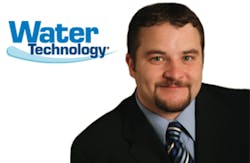Starting last month, the “Reduction of Lead in Drinking Water Act” (Senate Bill S.3874) adjusted to set a new federal standard for the level of permissible lead in plumbing fixtures that are used to transport water for human consumption. The Act changes the previously-allowable level of up to eight percent to an average content of less than 0.25 percent.
Since water treatment dealers are primarily tasked with maintaining water quality in a home or commercial setting, you and your workers should be mindful of the new law and its potential impacts on your customers and business. When possible, if this information is not known by the customer, communicate with the customer’s plumber or service technician to understand how the selected lead-based products were manufactured.
Information sharing is also critical. As a leading publication and online resource — www.WaterTechOnline.com — we have covered this topic multiple times over the past few months. Make sure staff is aware and understand how high levels of lead in drinking water can affect health.
Are you looking for “just the facts” on this new law? We recently broke down what you need to know here: https://www.watertechonline.com/articles/167380-just-the-facts-reduction-of-lead-in-drinking-water-act.
Looking for the health effects and history of lead contamination in drinking water? Our Technical Editor Dr. Joseph Cotruvo recently covered the contaminant lead here: https://www.watertechonline.com/articles/167113-contaminant-of-the-month-lead.
Water treatment dealers who also perform pipe and component installation services should already have a plan in place. However, for those catching up, you should know the new Reduction of Lead in Drinking Water amendment to the Safe Drinking Water Act affects every component of the water system, from water treatment facilities to distribution systems to residential and commercial piping and fixtures.
Best practices to prepare include: Take inventory of the equipment you currently have and determine which products are compliant and which are not; replace noncompliant products; keep separate any compliant products for potable water and exempted products for non-potable water; ask your local authority questions about equipment and fittings that are not mentioned explicitly in the amendment; learn the different equipment options available, which are compliant and which options work best for your purpose; and, of course, regularly read Water Technology and WaterTechOnline.com.

